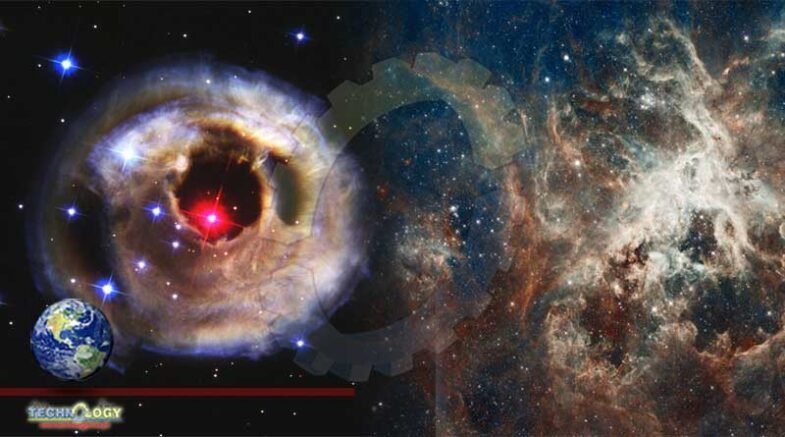NASA’s Hubble Space Telescope has discovered the explanation for the dimming of the red supergiant VY Canis Majoris.

NASA’s Hubble Space Telescope has discovered the explanation for the dimming of the red supergiant VY Canis Majoris.
The space agency has made the information public on its official website. Hubble’s official Instagram page has also shared the photo.
This beast, dubbed a red hypergiant, shines brighter than 300,000 Suns. Yet it is so far away that it may only be seen as a faint star in the Great Dog’s winter constellation 200 years hence.
The bloated monster would stretch hundreds of millions of miles between Jupiter and Saturn’s orbits if it replaced the Sun in our own solar system.
Why Did This Giant Go Dim?
Early last year, astronomers were shocked when the classic red supergiant star Betelgeuse started to dim. Such a star remained dim for several weeks and then gradually returned to its estimated brightness. The dimming on Betelgeuse was caused by a gaseous outflow that may have produced dust, which temporarily blocked some of Betelgeuse’s light from our vision, resulting in the dimming effect.
According to Brinkwire, VY Canis Majoris has dimmed since then and is no longer apparent to the naked eye. Astronomers cited an anomaly similar to the one that caused Betelgeuse to become temporarily dark last year.
The new analysis said the same mechanisms that caused Betelgeuse to dim might also explain why the red ‘hypergiant’ VY Canis Majoris in the Great Dog constellation dimmed. This star is much bigger than Betelgeuse, and NASA calls it a “ghost” because of its more extensive scale.
“VY Canis Majoris is behaving a lot like Betelgeuse on steroids,” explained the study’s leader, astrophysicist Roberta Humphreys of the University of Minnesota, Minneapolis.
The analysis claims that VY Canis Majoris has been subjected to several “huge ejections of material” that have resulted in the fading effect. As a result, this star is no longer apparent to the naked eye. The dimming is most likely due to dust produced by the ejections, which is blocking the sun.
The Hubble data was used to more precisely pinpoint when these ejections occurred, eventually narrowing it down to many cases in the 19th and 20th centuries.
VY Canis Majoris began its existence as a brilliant blue supergiant star that evolved into a red supergiant over a few million years.
According to the researchers, the star may have switched back to a hotter state before cooling down again, rendering it a ‘second-stage red supergiant.’
The researchers were able to date these eruptions more precisely by using Hubble to calculate the close-in knots’ velocities and movements of hot gas and other features.
What Could Be The Cause of These High Mass-Loss Events for Betelgeuse, VY Canis Majoris?
Large-scale surface movement, such as large convective cells on the Sun, is likely to be the source of these high mass-loss events in both VY Canis Majoris and Betelgeuse.
The cells on VY Canis Majoris, on the other hand, might be as big as the Sun or even bigger.
Humphreys said the star is certainly larger than scientists believed, and VY Canis Majoris is a perfect example. The researcher added it may also be the key mechanism causing mass loss in red supergiants, which has always been a bit of a mystery.”
Other red supergiants are brighter and eject more dust than VY Canis Majoris, but none of them is as complex as VY Canis Majoris. The star may be in a special developmental stage that distinguishes it from other stars.
It’s most likely been around for a very short time, maybe just a few thousand years.
Originally published at The Science Times
